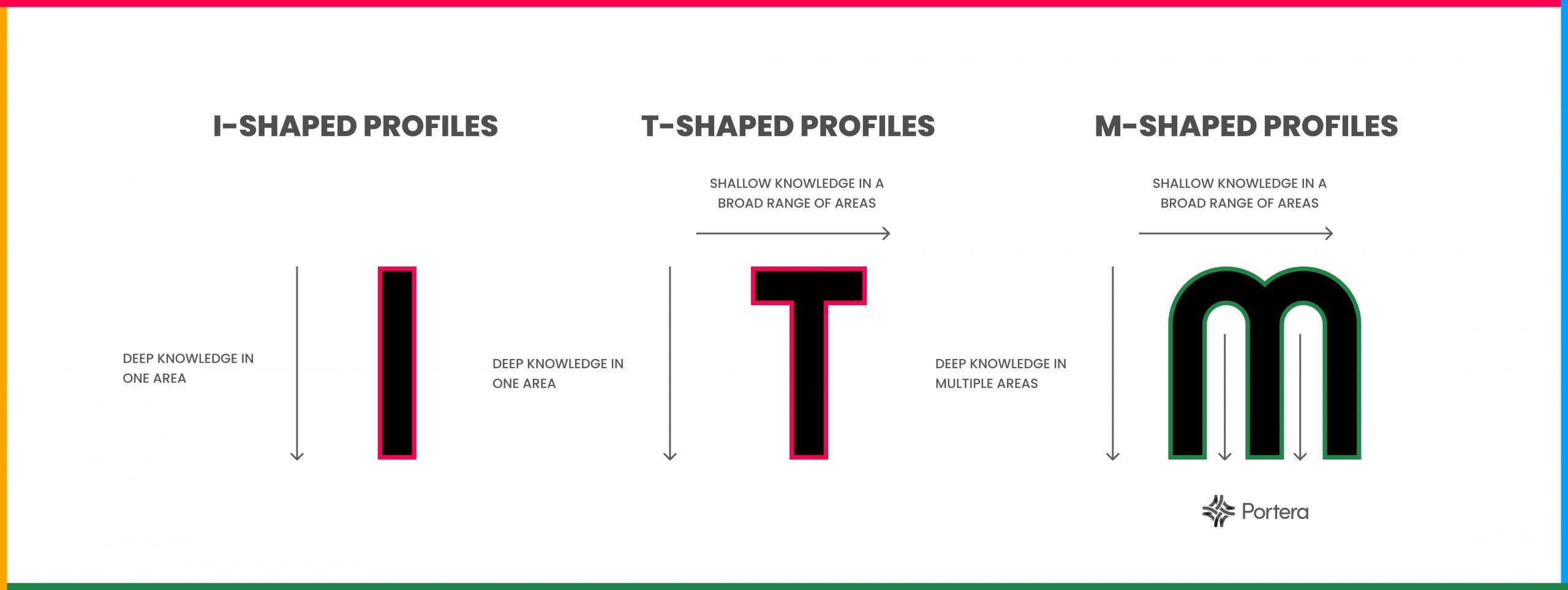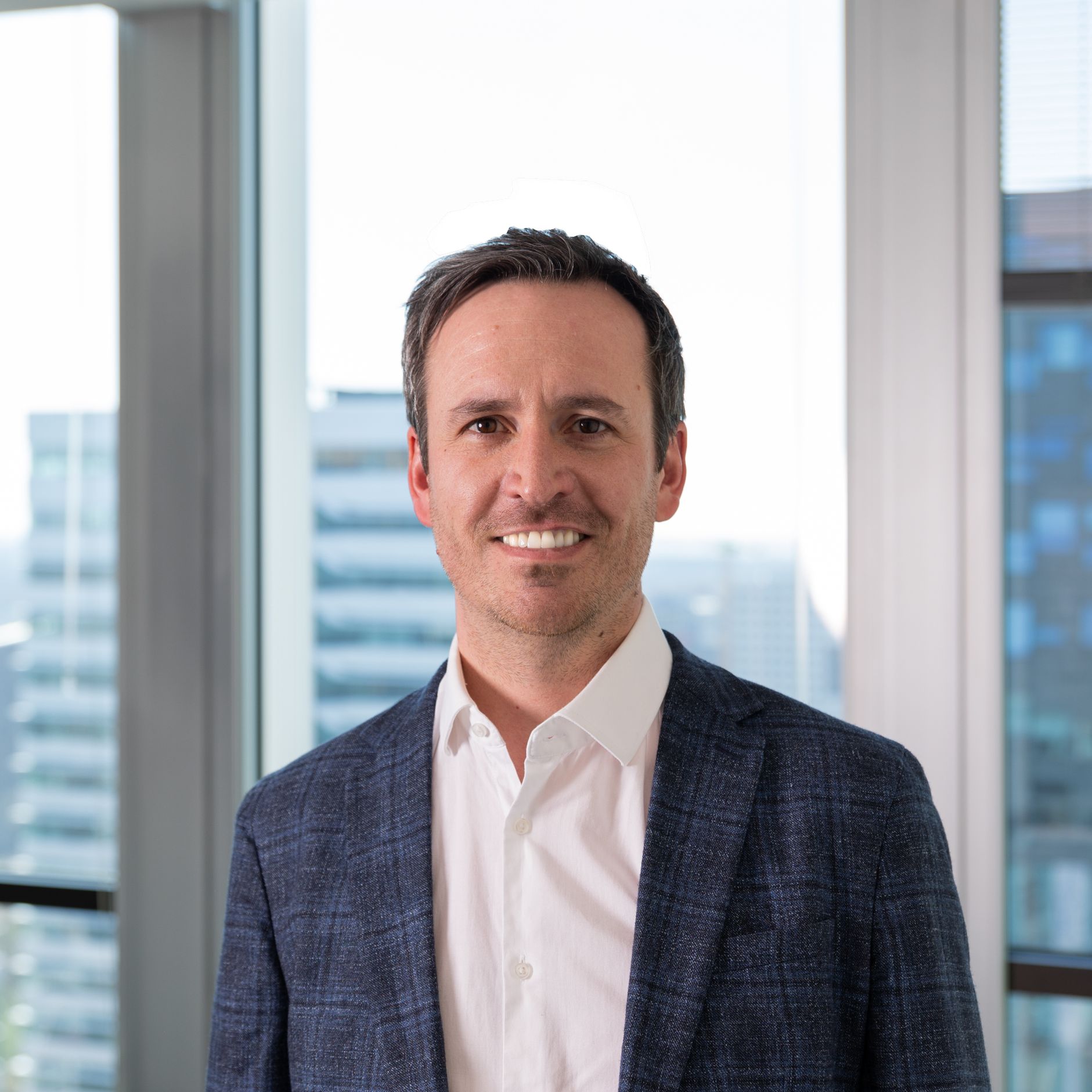M-shaped people – the key to successful digital transformation
Enhanced Pod Performance: The Impact of Multiskilled Profiles
Successful execution of digital transformation is fundamental to ensuring business survival. The fact only fifty percent of Fortune 500 companies still exist (compared to 20 years ago) is proof of this need to continuously improve. And yet the outlook for new enterprises is even less encouraging with only 30% of small businesses surviving beyond a decade (US Bureau of Labor Statistics).
But the current approach reinforces both the structural challenge multinational enterprises are facing in digital transformation (siloed thinking) and the situational challenge they face, namely lack of internal cohesion when it comes to executing digital transformation initiatives. Both of these cause real problems for digital transformation, and a change in leadership profile is needed to improve outcomes.
Mastering Digital Transformation: Building Agile Pods for Success
Digital transformation is complicated. And the truth is, many leaders lack the depth of knowledge they need to oversee this kind of transformation. This isn’t a criticism – just an observation on the reality that technology moves so fast it is hard to keep up, let alone master, whilst also leading global organisations.
Business leaders therefore legitimately rely on external support, advisors, and subject matter experts for guidance. After all, it seems logical that if the problem is with IT, you should bring in IT specialists, or if the problem is customer loyalty, you hire a brand expert. Whether internal resources or external, the issues arise when a specialist is too narrow in their expertise, and too focussed on a specific task. They may not see the bigger picture. So they make recommendations, solve an immediate issue, or implement a new technology platform in good faith but the desired outcome fails to materialise. Millions invested, with unintended consequences and legacy issues for the business to now overcome.
The challenge for business leaders – especially those charged with digital transformation, is therefore how to assemble teams (or pods) that can see the bigger picture, whilst maintaining executional excellence in a cost, and time-efficient way.
Unlocking Potential: The I-Shaped vs T-Shaped Professional Dilemma
There is a useful methodology utilized by Human Resources to define people by the depth and breadth of their expertise – I-shaped and T-shaped people.
An I-shaped individual is someone who possesses deep expertise and specialized knowledge in a specific field or domain. They have a narrow but profound skill set, often gained through education, training, and extensive experience. This sort of person excels in a particular area and is considered a subject matter expert. However, because their expertise is limited in scope, they can find it challenging to adapt or work in other fields.
I-shaped individuals tend to see the problem and solution solely through the lens of their own expertise. As an example, if you go to a surgeon with a health problem, they will be more likely to recommend surgery, whereas a homeopath is unlikely to propose this solution. For a business, I-shaped individuals offer a sphere of knowledge that is concentrated in just one area alone. Where multiple I-shaped people are involved, it can complicate the process and introduce more inefficiencies as each pushes for the adoption of their own preferred solution.
A T-shaped individual, first coined by McKinsey in the 1980’s, is someone who combines deep expertise in one specific area (the vertical part of the T) with a broader understanding of various related disciplines (the horizontal part of the T). This person has a strong foundation in their specialized field but also possesses a range of skills and knowledge in other related areas.
Because they can span different disciplines, T-shaped individuals thrive in collaborative and interdisciplinary settings. They communicate effectively with diverse teams and bring a holistic perspective to problem-solving. However, T-shaped people can be an issue in situations where they understand some of everything, but not enough to really move things forward. Furthermore, although they possess knowledge within their area of expertise, parallel areas may not be addressed. This can lead to endless discussions without any final conclusion or a ‘compromise’ solution that tries to please everyone.
In an increasingly complex and dynamic environment, the I and T experts may resolve a specific issue but do not always have the scope to deliver the best solution for the entire business. But there is another option.
Multidisciplinary Individuals: M-shaped People

M-shaped people exhibit a multi-disciplinary profile and can work in depth across multiple complementary areas of expertise. Their cross-functional, holistic thinking results in practical and enduring solutions that can be delivered easier, and quicker: resulting in better outcomes for your business.
This is why, at Portera, we have M-shaped individuals across our organization. Our team comprises consultants who have broad and deep experience in business, commerce, and technology. For example, our solutions architects can define business requirements, manage projects, and derive the business case whilst accumulating business context. Our lead developers are not only experts in multiple technologies but also in project management and client communication. Our web designers will naturally undertake the UX/UI function but are also able to define your requirements and develop the messaging.
This depth and business-wide understanding enables an agile and adaptable approach that can look beyond the immediate issue to see the bigger picture. This gives us the ability to think beyond the initial scope of work to solve problems at speed and deliver a creative solution. Our consultancy is therefore focused on developing solutions that are best for the whole business, not just a single department, with implementation and impacts considered over time and not just as an immediate fix.
Bridging Gaps and Maximizing Returns: The Power of M-Shaped Consultancy in Technology Integration
In one recent example, Portera utilized an anti-counterfeit technology as a solution to a sales issue by understanding a completely unseen use case. Our experts were able to bridge the gap between manufacturing execution systems and consumer experience, connecting multiple layers of systems in between. We brought the business case to a different internal business function, which transformed the return on capital employed (ROCE) for the initial technology investment and resulted in a 4% market share gain for the overall business.
M-shaped consultancy can certainly be more efficient than traditional ‘single-subject’ experts. For example, when Portera took over a DevOps support and management contract from a well-known computer consultancy, our team of four full-time engineers took over from a team of 11 part-time people. Productivity and output increased by more than 30% as a result.
In conclusion, 21st-century businesses face complex technological and operational challenges that require multiple skills to resolve effectively. While single-subject or limited-range experts may still have a role, it is increasingly likely that the multidisciplinary individual will be the expert of choice: particularly in times of crisis. Choosing a multidisciplinary consultant can bring a more holistic view of the technology landscape and make use of better-optimized resources to deliver agile and practical business outcomes. Furthermore, they can deliver better value for money: why hire 10 single subject experts when you can have one multi-expert?
Sources:
https://www.entrepreneur.com/starting-a-business/the-true-failure-rate-of-small-businesses/361350

